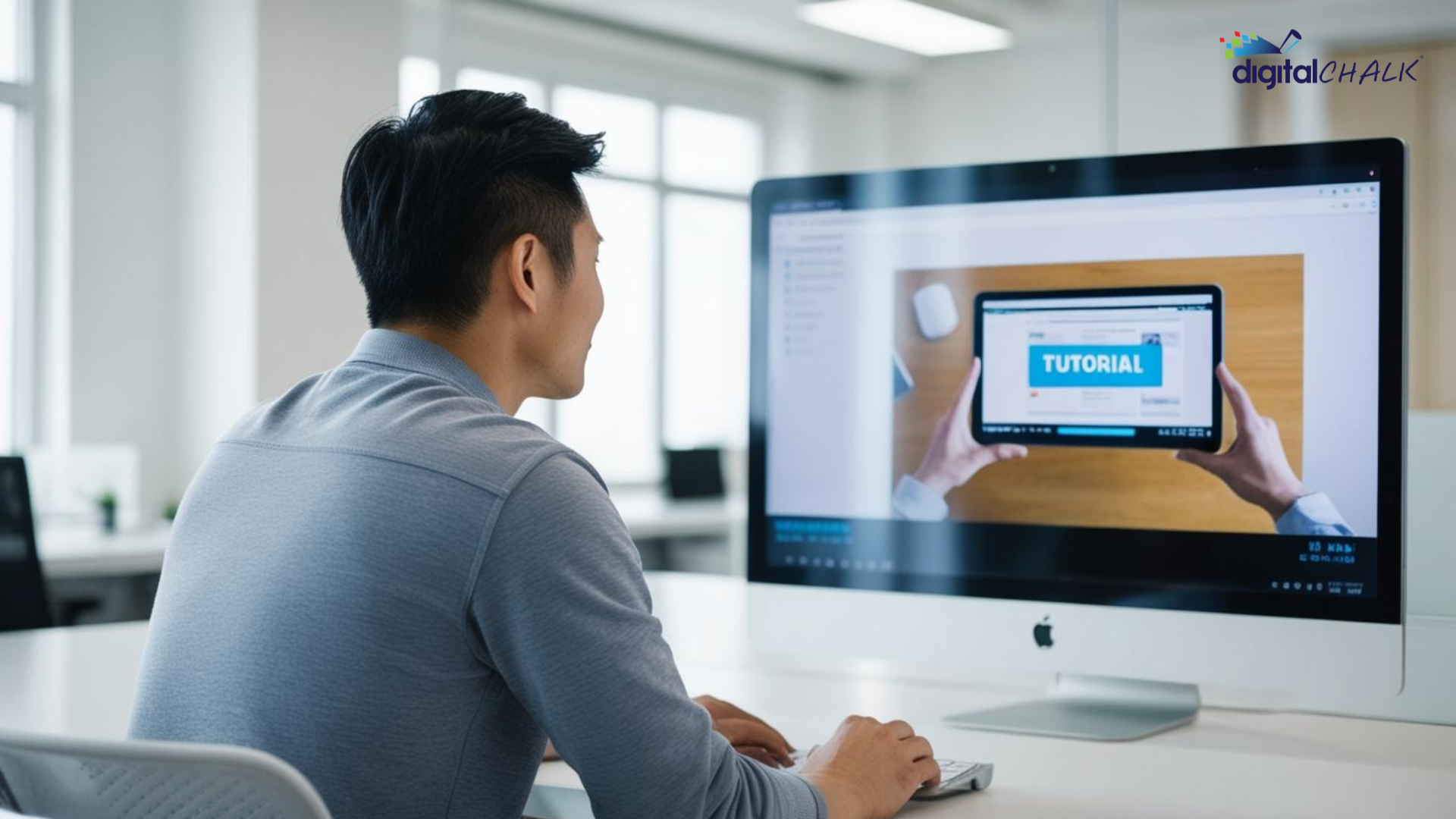Video has been a powerful tool for teaching various topics in people’s personal lives – from how to bake a cake to finding creative ideas to remodel a home. It’s no wonder that 95% of companies use some form of video to train employees, especially on critical business topics like cybersecurity or safety training. But what makes video so effective, and how does it impact learning outcomes?
In this blog, we are taking a closer look into the role of video in eLearning. We’ll cover when video is most commonly used, its key benefits, and whether learners prefer video as a learning method. We’ll also highlight how DigitalChalk fits into this conversation by offering innovative video tools to enhance the eLearning experience.
When & Why is Video Used?
Video is a versatile tool in eLearning because it can simplify complex information and present it in an easily digestible format. Research shows that 83% of learners can recall information learned through video or visual presentations compared to text alone.
When it comes to leveraging video, there are several key ways training leaders can use it effectively:
- Onboarding and Compliance Training: Video is often used to guide new employees through company policies or compliance procedures. Screencasts, which combine screen recordings with voiceovers, are especially useful for showing how to use software systems and processes. This method is also perfect for onboarding new employees in the office, in the field, or working from home. Many companies create training videos using Zoom or other screen recording software, which are then converted to a SCORM format and delivered through an LMS.
- Scenario-Based Learning: Video is an effective tool for demonstrating real-world situations, particularly in industries such as healthcare or construction. By watching hypothetical scenarios, learners can see the impact of their actions and make more informed decisions in a safe, risk-free environment, which helps them prepare for similar challenges in the workplace.
- Instructional Demonstrations & Training: Video allows trainers to visually demonstrate tasks and procedures, making it easier for learners to understand and apply new skills. Whether it’s technical training or soft skills development, video provides a dynamic platform for showing rather than just telling.
- Tutorials: Whether it’s a step-by-step guide for software usage or a “how-to” video for personal development, tutorials are among the most popular and effective video content types. These videos break down complex processes into manageable chunks, helping learners master topics at their own pace.
In all of these cases, video improves the learning experience by providing an engaging, interactive way to connect with content and gain practical skills without the limitations of in-person training.
Benefits of Using Video in eLearning
Video offers several key advantages, making it an essential tool for effective eLearning. Here are some of the most important benefits:
- Accessibility
- Increased Comprehension & Knowledge Retention
- Lower Training Costs
- Scalability
Video breaks down barriers to traditional learning environments by offering learners the flexibility to access training content anytime and anywhere. Combining visual and auditory elements also enhances comprehension and knowledge retention, making information easier to understand and remember.
Additionally, video reduces the high costs associated with in-person training, such as travel, accommodations, and instructor fees, while still delivering high-quality content. Finally, video is incredibly scalable. Whether you’re training a small group or an entire workforce, you can reach a broad audience with consistent, cost-effective training materials that can be used and reused as needed. Video content is also easier to update than printed training materials. With video, trainers can make quick course changes without reprinting and distributing.
Do Learners Like Video Content?
Learners are very enthusiastic about video content. 75% of employees prefer video-based learning over traditional reading. This is because video helps keep their attention and makes complex ideas easier to grasp. In today’s digital world, people are used to consuming video content on platforms like TV, movies, and social media, making video a natural and effective way to deliver information.
It’s important to maximize the use of video in your training programs, so be sure to check out our blog post, ‘Best Practices for Creating Effective Learning Videos,’ for more information.
How DigitalChalk Enhances Video Content
DigitalChalk’s video element is designed to maximize flexibility and accessibility for both learners and administrators. Learners can adjust playback speed (2x, 1.5x, 1.25x), jump between chapters and access captions in multiple languages. The platform allows administrators to break videos into sections with chapter markers and customize thumbnails – by uploading their own or using auto-generated options.
DigitalChalk also offers AI-powered video creation tools that help educators produce high-quality, professional videos in minutes. The AI tools assist with tasks such as adding captions and descriptions, allowing administrators to focus on teaching rather than technical details. We’re also working on adding more enhancements to our AI video support, such as adding knowledge checkpoints and synchronized slides with audio, to create an even more dynamic learning experience.
Book a Demo
Whether using video for onboarding, compliance training, or skill development, incorporating video into your eLearning strategy can enhance the learner experience. With DigitalChalk, managing and delivering video in training programs is effortless, so administrators save time while keeping learners engaged.
Schedule a personalized demo to explore our video capabilities and discover how DigitalChalk can help you build a more engaging and effective learning experience for your team. Our team looks forward to helping you reach your training goals.
